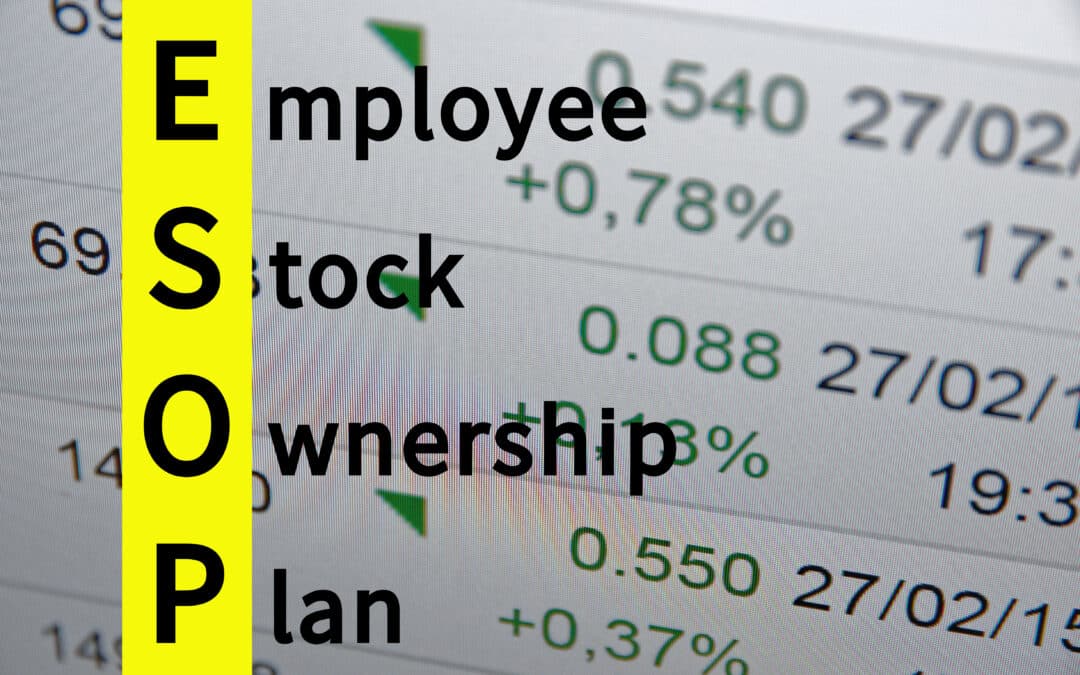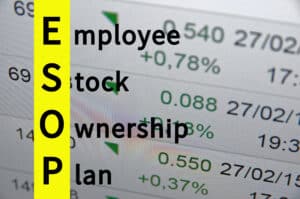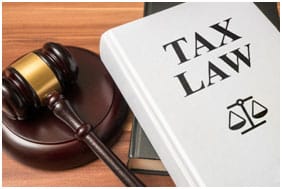
ESOP Pro’s and Con’s
Making decisions about your business succession plan requires critical thinking. It’s a big and potentially expensive step. Conversely, the cost of not planning can be huge. These range from a business that dies with your retirement or demise to lost money for you and your heirs.
An Employee Stock Ownership Plan (“ESOP”) is a succession strategy often considered. What are the key pros and cons?
While we recommend that your situation be reviewed with your attorney and accountant. The following pros and cons are general observations and not hard and fast rules or guaranteed results.
| Sale to ESOP | Sale to Third Party | Comment |
|---|---|---|
| You receive fair market value. | A higher price may be attained. | Finding a buyer for a closely held business is a challenge. While you may receive a higher offer from an outsider, the purchase price often includes cash plus a note; there is a risk that the note will not be paid in full or at the stated terms. Payment of notes is often contingent on future results, over which you have zero control. Selling to key management or family members is a possibility that often requires resolving the “how will they pay me” question.
|
| Owners of S Corps selling to an ESOP have potentially significant tax deferral and other benefits. | While certain tax mechanisms can be employed, taxes will be due from you to the IRS and potentially state and local authorities. | Your tax expert is the best resource for your personal and your company’s pros and cons regarding taxes. |
| As trusts, ESOPs pay no federal income taxes. Often, they don’t pay state and local income taxes. | Most businesses and their owners pay federal, state, and local taxes at either the company or at the owner level. Sometimes both. | This tax advantageous position provides more cash flow to the ESOP-owned company, which in turn can accelerate the growth of the business. |
| ESOPs can borrow funds at advantageous interest rates and terms. | The buyer’s credit determines their borrowing interest rate and terms. | If the buyer is financing the deal, it may take longer to pay you back. The longer the payback, the higher the risk. Conversely, entrepreneurs understand and manage their business’ various risks. In an ESOP, the owner may continue to manage the company, which mitigates business risk and improves cash flow and financing success. |
| Cash and stock contributions by the company to the ESOP are tax deductible. This includes contributions to repay the ESOP’s loan. In essence, you can deduct loan payments (with certain limitations). | A buyer may need to finance the purchase with unknown terms and rates. Sellers are often asked to accept financing as a portion of the purchase price. | ESOPs generate potential tax benefits to the owner and the Company. Seller financing adds another layer of risk to the seller. |
| Employees terminate and need to be bought out. They have a right to diversify out of the company’s stock if age and employment longevity requirements are met | Not an issue | ESOPs and the related company must maintain sufficient funding to meet expected retirement and diversification obligations. Routine studies are required to quantify this liability and the timing of expected payouts. |
| Employees continue to run the company. | Not your concern any longer. | Acquirers often replace key personnel. Who’s to say the new management can run the business as well as you and your management team? Having a trained and skilled management team is a must regardless of your succession plan. |
| Ownership can be transferred gradually | Once purchased, the company belongs to the buyer. | The owner may be asked to stay for 6 months to a year, but then they are forced to leave. A sale to an ESOP over time gives the owner a level of comfort that the business can continue without them. It provides the opportunity to fine-tune the management team’s training. |
| Disclosure of your company’s confidential information is limited to people who already know about you and to the trustee of the ESOP. As a fiduciary, the trustee cannot disclose this information. | Your business becomes an open book to potential buyers. | While potential buyers sign non-disclosure agreements, if the deal does not go through, the potential acquirer (a competitor?) now has information you may not want them to have – customers, suppliers, internal processes and more. |
| Setting up an ESOP can be costly. Lawyers, a trustee, a third-party administrator (“TPAs”), and a valuation firm, among others, are involved. Fees can add up. | Merger and acquisition/broker fees and other costs of preparing your business for a sale (lawyers, accountants) can be high. There is a significant investment of your time. | A sale to a third party happens only once. An ESOP sale may happen several times if the transfer to the ESOP is staged. |
| Maintaining an ESOP can be costly. Lawyers, TPAs, the trustee and the valuation firm are engaged annually to handle the filings for the ESOP with the IRS, the Department of Labor, and potentially others. | Once an acquisition is complete, the costs borne by the seller cease. | Having a strong cash flow is essential for an ESOP. These costs may be more than offset by the potential tax advantages of an ESOP. |
| Employee productivity and morale have been proven to rise. | The impact on employee productivity and morale is questionable. It depends on the acquirer and their management style compared to yours. | Studies uniformly show employees enjoy being owners. |
| For employees, a retirement plan in the form of an ESOP depends on the success of the company. This adds risk. While there are protections available for non-ESOP retirement plans (such as potentially the federal Pension Benefit Guaranty Corporation, there is no equivalent for ESOPs currently. | About 68% of private industry employees have pension plans available in which only 51% of employees participate (US Bureau of Labor Statistics, March 2021). This includes 401(k) plans. | Many ESOP companies also offer 401(k) plans. A 401(k)is employee money partially or fully matched by the company |




 important regulatory implications, particularly with the Department of Labor (DOL). While it is not unusual for a business owner to want to serve as trustee for the ESOP, an external trustee is almost always a better course, particularly when the trustee is also the selling shareholder.
important regulatory implications, particularly with the Department of Labor (DOL). While it is not unusual for a business owner to want to serve as trustee for the ESOP, an external trustee is almost always a better course, particularly when the trustee is also the selling shareholder.

